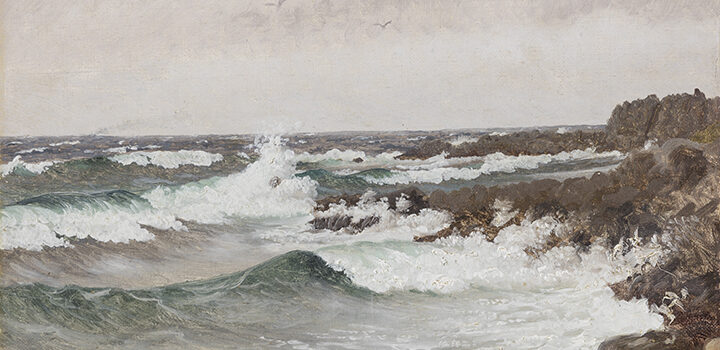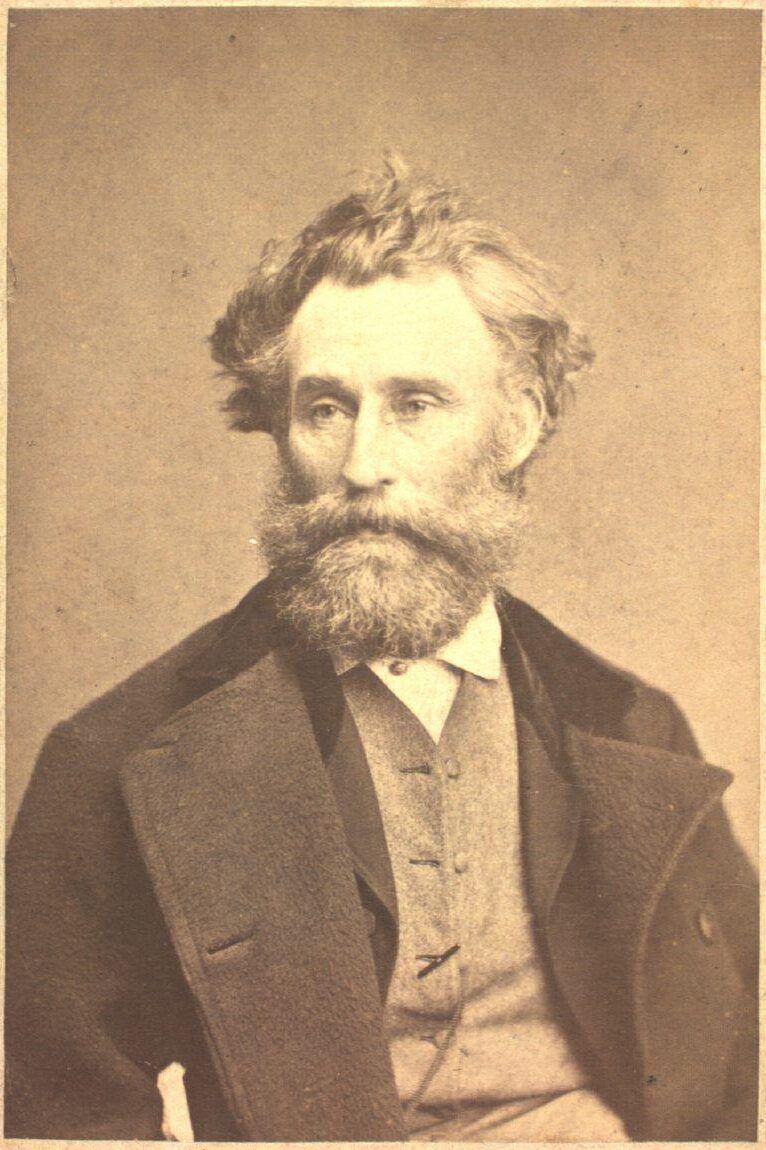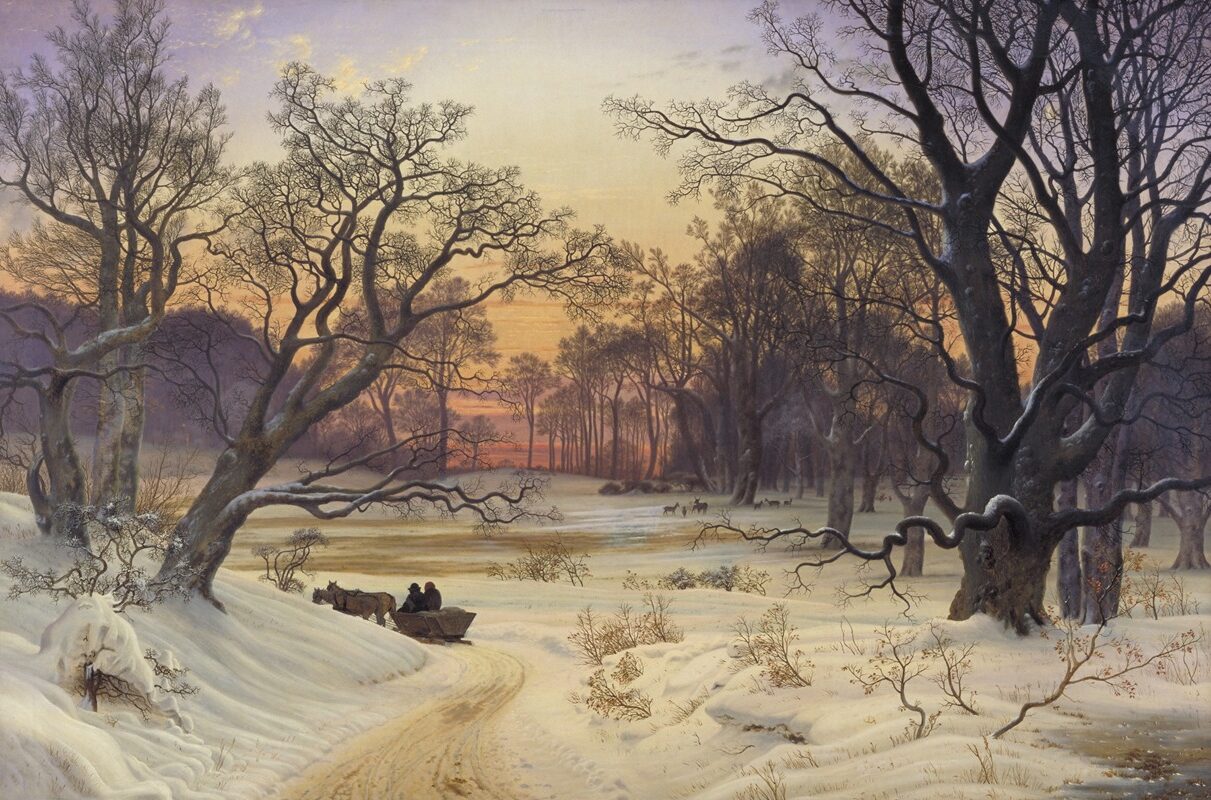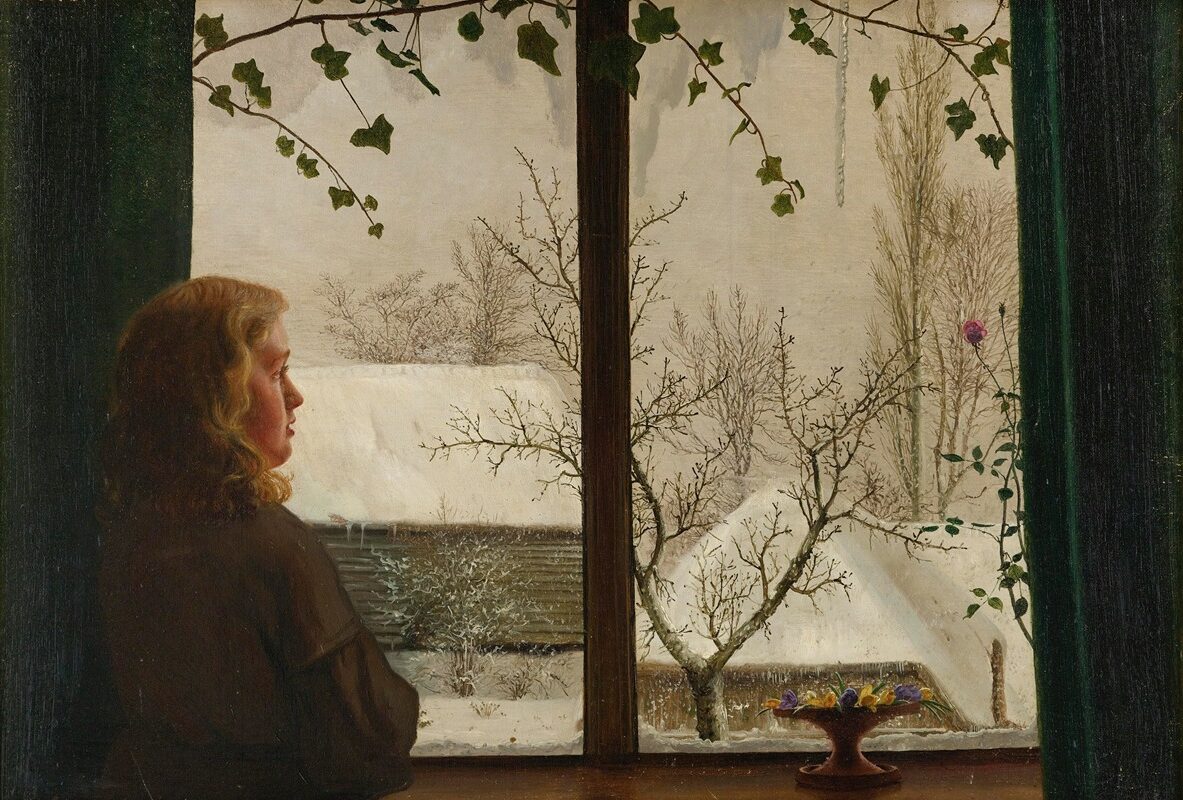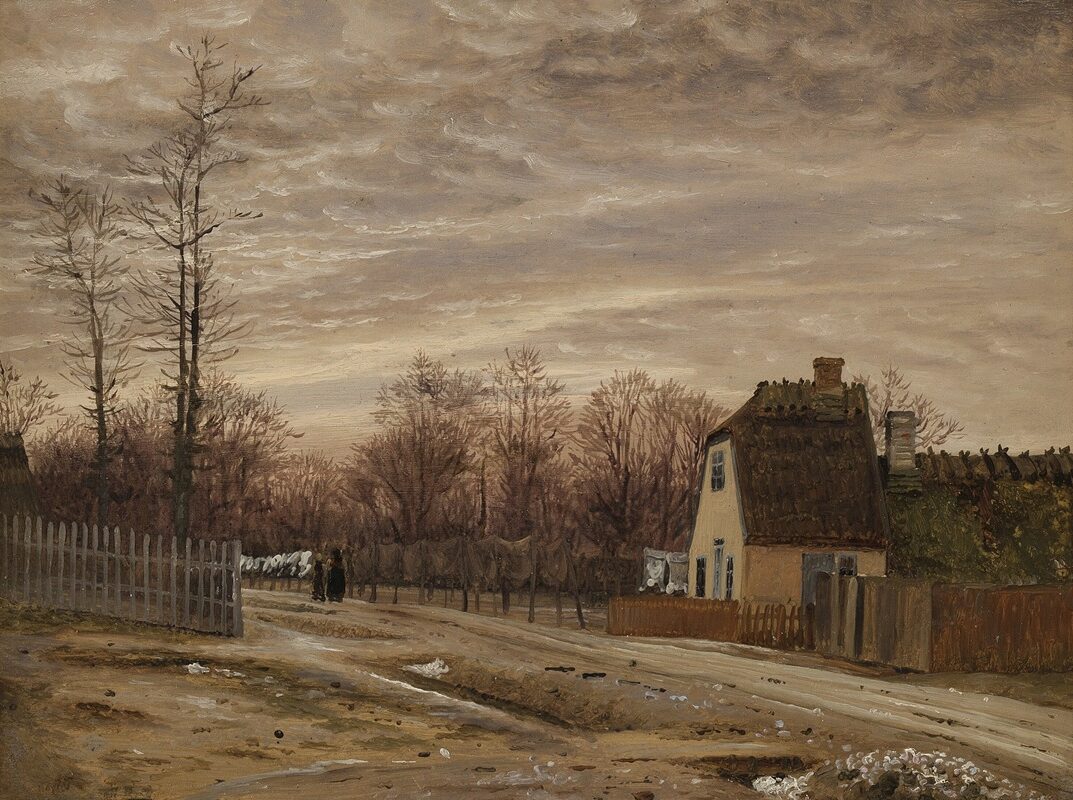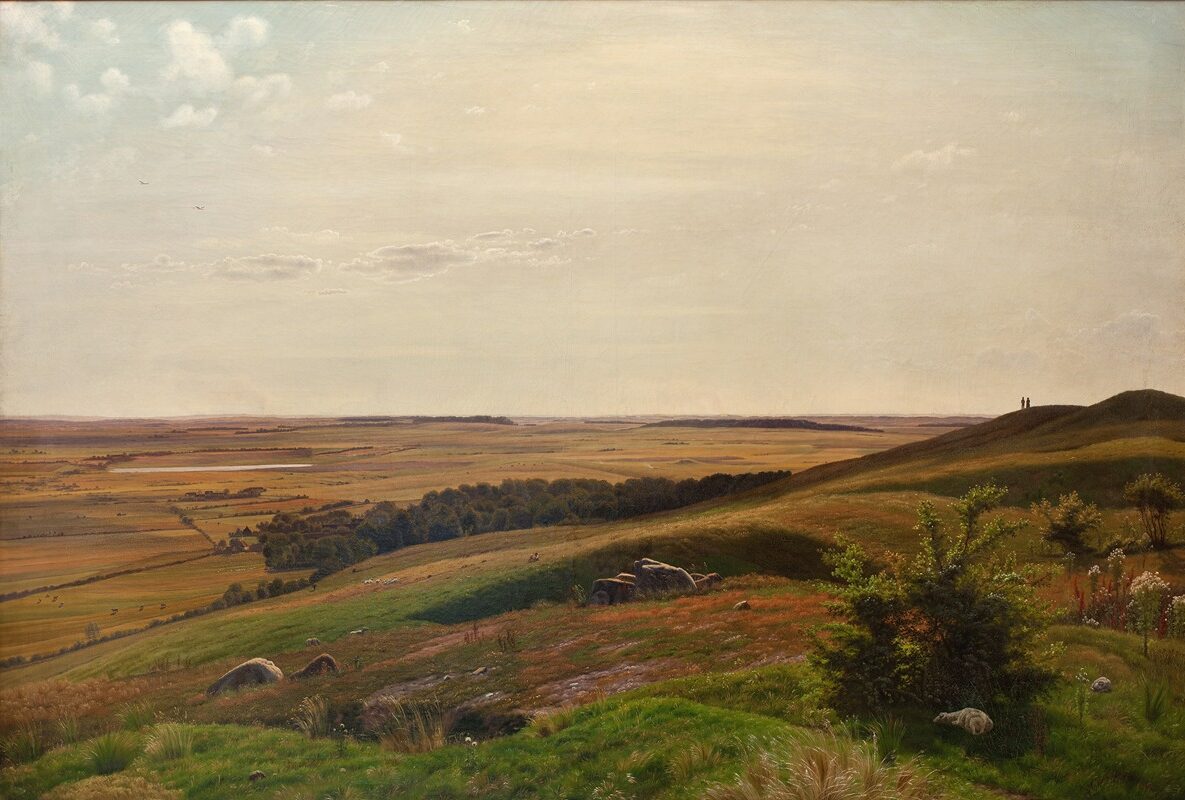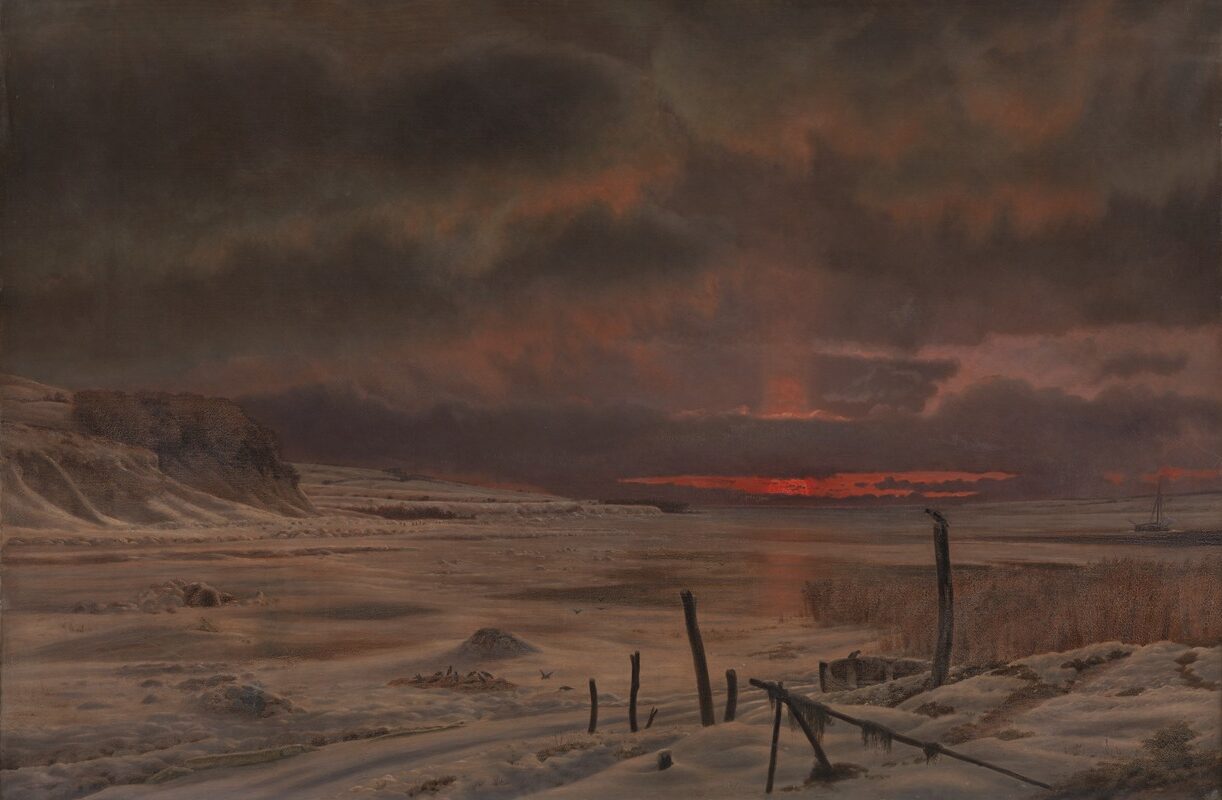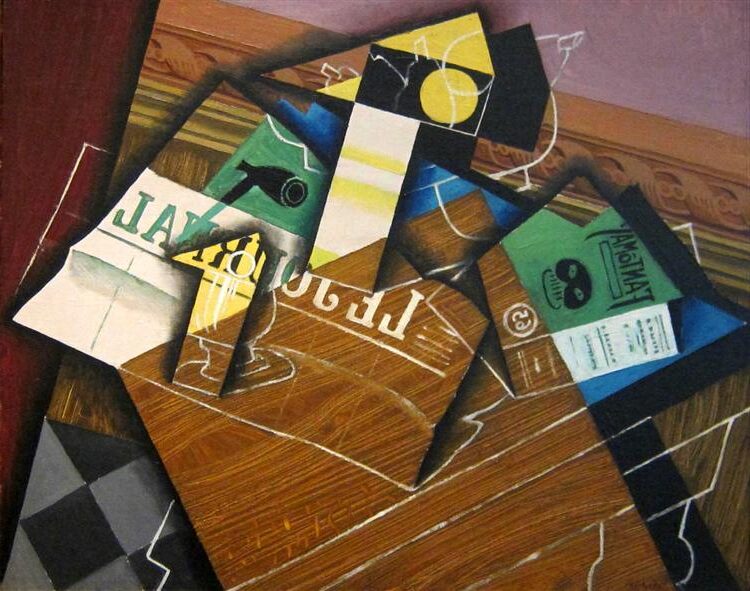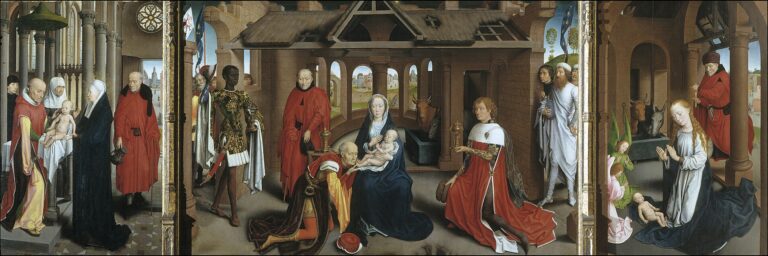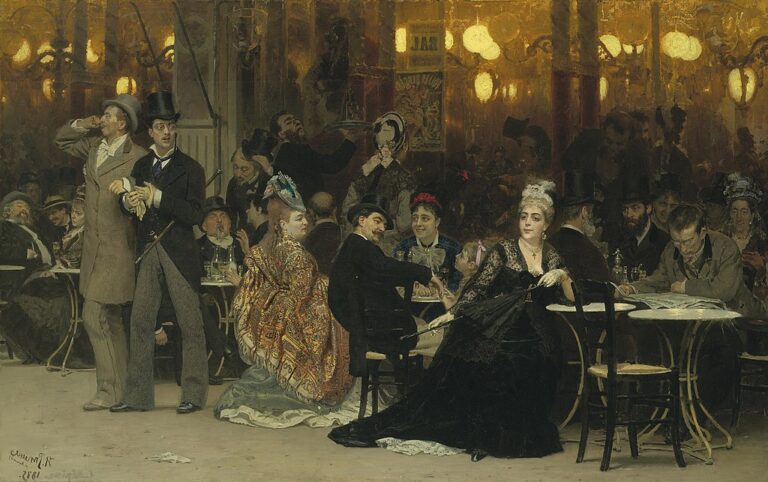Vilhelm Kyhn Painter: The Danish Landscape Master of the 19th Century
Born: March 30, 1819, Copenhagen, Denmark
Death: May 11, 1903, Frederiksberg, Denmark
Art Movement: Danish Golden Age
Nationality: Danish
Influenced By: Christoffer Wilhelm Eckersberg, J. L. Lund, Niels Lauritz Høyen
Institution: Royal Danish Academy of Fine Arts, School of Plaster Model Painting, and School of Model Painting
Vilhelm Kyhn Painter: The Danish Landscape Master of the 19th Century
Vilhelm Kyhn Biography
Peter Vilhelm Carl Kyhn was one of Denmark’s most notable landscape painters of the 19th century. His artistic journey spans from his early training at the Royal Danish Academy to his development as a key figure in national romantic painting.
Early Life and Education
Vilhelm Kyhn was born on March 30, 1819, in Copenhagen, Denmark. Before pursuing art, he initially studied commerce, showing his practical background.
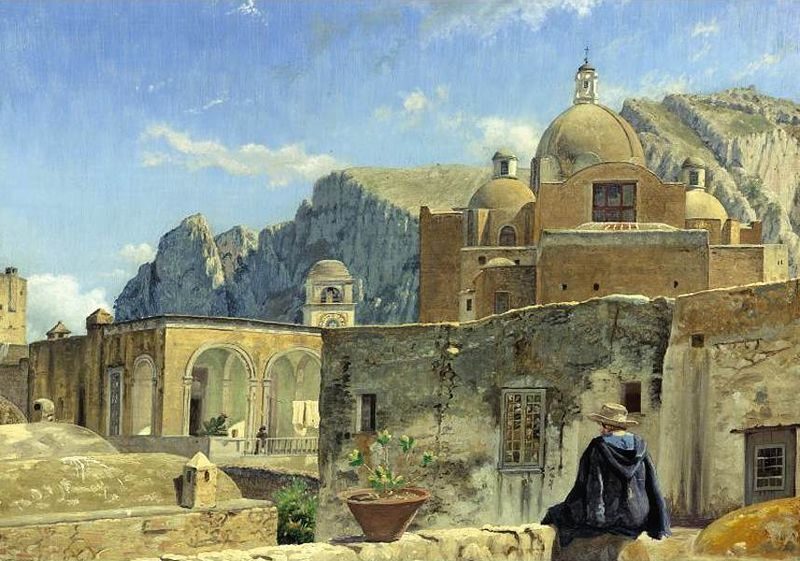
A Young Boy Seated On A Wall, Overlooking Capri (Ca. 1850-52)
Kyhn later shifted his focus to copper engraving, which provided technical skills that would influence his later work.
In 1836, he began formal artistic training at the Royal Danish Academy of Fine Arts in Copenhagen.
At the Academy, Kyhn studied under prominent instructors including Christoffer Wilhelm Eckersberg and Johan Ludwig Lund. Eckersberg, known as the “Father of Danish Painting,” likely shaped Kyhn’s attention to detail and realistic approach to landscape.
Career Development and Influences
Kyhn developed his distinctive style during the period following Denmark’s Golden Age of painting. He became a significant figure in the national romantic movement, which celebrated Danish landscapes and cultural identity.
His landscapes captured the unique qualities of Danish countryside scenes with emotional depth and technical precision. Kyhn’s work reflected both artistic trends of his era and his personal connection to Denmark’s natural beauty.
Copenhagen remained important to Kyhn’s career as a center of artistic activity. He exhibited regularly and gained recognition among his contemporaries.
Unlike some artists who traveled extensively, Kyhn focused primarily on Danish subjects. This dedication to local landscapes helped establish him as a painter who truly captured the essence of Denmark’s natural environment.
Later Years and Death
In his later career, Kyhn continued to refine his approach to landscape painting. His mature works showed mastery of technique while maintaining emotional resonance.
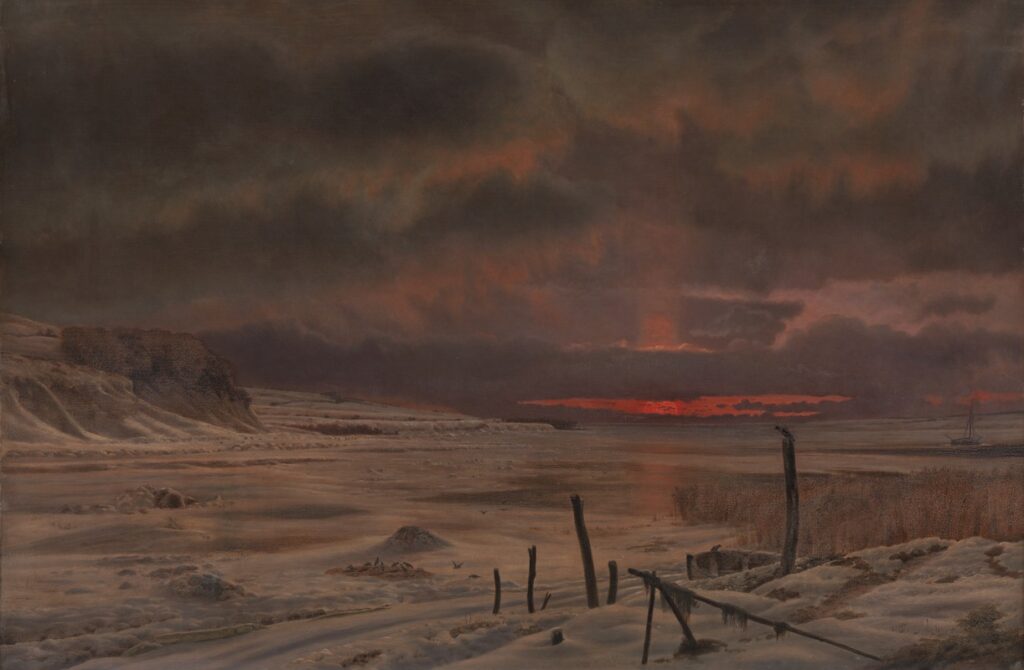
A Winter’s Evening by a Danish Fiord (1875)
Kyhn’s influence extended beyond his own artwork. He shared his knowledge with younger artists, helping shape the next generation of Danish painters. His commitment to Danish landscape traditions ensured his artistic legacy would endure.
After a long and productive career spanning several decades, Vilhelm Kyhn died on May 11, 1903, at the age of 84. His death marked the end of an era in Danish art.
Kyhn’s paintings continue to be displayed in major museums, including The Metropolitan Museum of Art and The Fitzwilliam Museum. His work remains valued for its skill and its expression of Danish national identity through landscape.
Artistic Style and Techniques
Vilhelm Kyhn developed a distinctive approach to landscape painting that captured the essence of Danish scenery. His technical skills evolved throughout his career as he balanced formal training with his personal artistic vision.
Key Characteristics of Kyhn’s Paintings
Kyhn’s paintings feature a romantic interpretation of Danish landscapes with particular attention to atmospheric effects. He often depicted rural scenes, rolling hills, and coastlines using a color palette that emphasized earth tones and natural light.

Day Dreams, c. 1850s by Vilhelm Kyhn
His brushwork was typically detailed yet expressive, creating textures that brought his landscapes to life. Kyhn preferred oil on canvas as his primary medium, allowing him to achieve rich depth and luminosity in his works.
Unlike some contemporaries, Kyhn maintained a commitment to realism while still infusing his scenes with emotional resonance. His compositions often included small human figures that emphasized the grandeur of nature.
Weather conditions played a significant role in his paintings, with dramatic skies and cloud formations becoming one of his recognizable trademarks.
Influence of Copenhagen and Italy
Kyhn’s artistic style was shaped by his education at the Academy in Copenhagen, where he studied under J.L. Lund and Eckersberg beginning in 1836. These mentors instilled in him technical precision and observational skills.
The landscapes around Copenhagen provided Kyhn with early inspiration, particularly the changing light conditions of the northern climate. These urban outskirts and rural surroundings became recurring subjects throughout his career.
His travels to Italy broadened his artistic perspective significantly. The Italian countryside, with its different quality of light and landscape features, influenced his approach to composition and color.
After returning from Italy, Kyhn incorporated both the technical elements of Italian painting traditions and the atmospheric qualities he observed there into his depictions of Danish scenery.
Collaborations with Other Artists
Kyhn maintained connections with fellow Danish National Romantic painters, participating in creative exchanges that refined his techniques. These collaborations helped establish common themes and approaches within the movement.
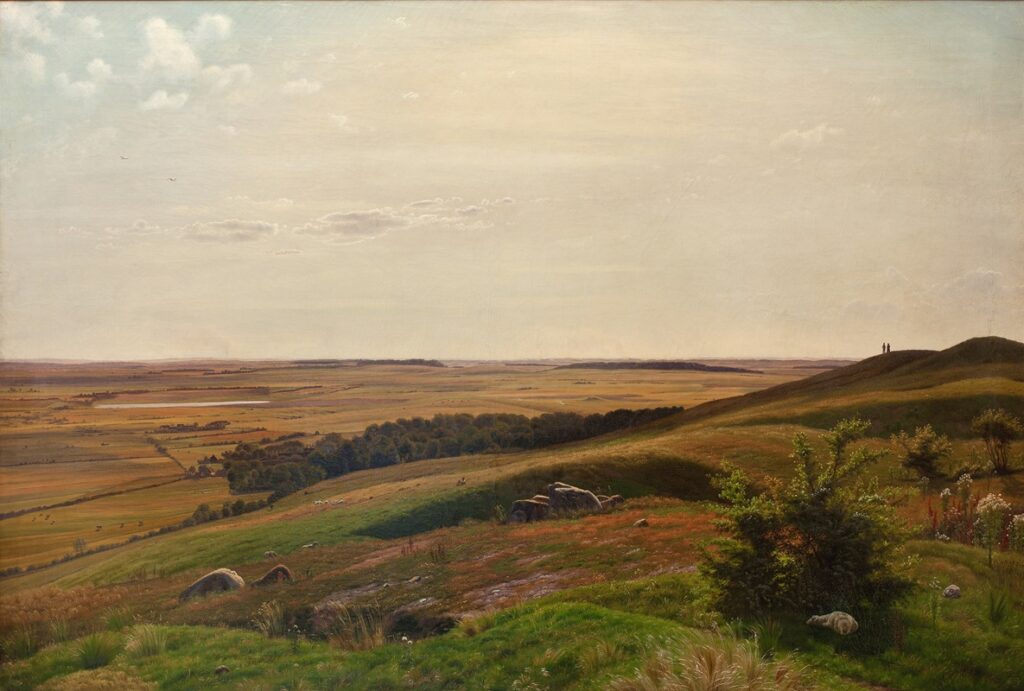
Bjerglide i nærheden af Horsens. Eftermiddag (1858)
He occasionally worked alongside other artists in outdoor painting sessions, an important practice for landscape painters of his era. These collaborative experiences allowed him to observe different technical approaches and compositional strategies.
As his reputation grew, Kyhn became an influential figure himself, sharing his knowledge with younger painters. His emphasis on capturing authentic Danish landscapes inspired many emerging artists.
Though primarily focused on his individual work, these professional relationships enriched Kyhn’s artistic development and helped position him as a key figure in 19th century Danish painting.
Legacy and Contributions
Vilhelm Kyhn’s impact on Danish art extends far beyond his lifetime. His romantic landscapes captured Denmark’s natural beauty and helped shape the nation’s artistic identity during a crucial period of development.
Significance in Danish Art
Kyhn emerged as a key figure in Danish national romantic painting during the 19th century. His works celebrated Denmark’s landscapes with patriotic fervor, creating a visual identity for the country. Unlike contemporaries who traveled extensively, Kyhn focused primarily on Danish scenes, helping establish a distinctly national artistic tradition.
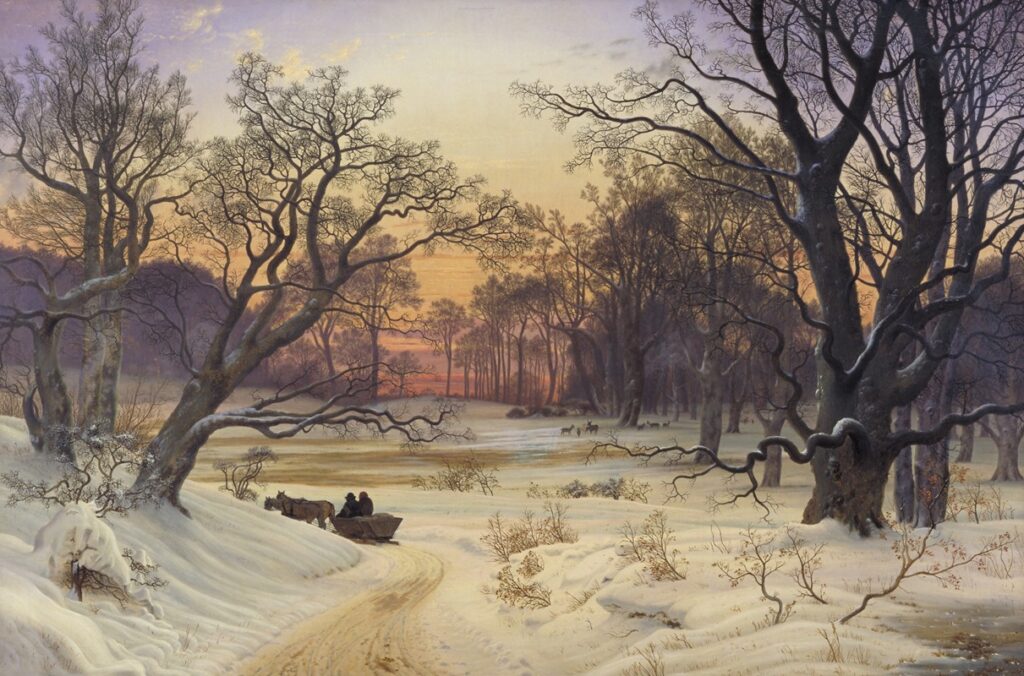
Winter Night in a Forest (1853) by Vilhelm Kyhn
As founder of the “Cavern Academy” in his garden studio, Kyhn influenced generations of Danish artists. This institution became a forerunner to the “Free Art Schools” and emphasized painting and drawing from nature. His teaching methods encouraged artists to work outdoors and capture the authentic Danish landscape.
Kyhn’s influence extended to younger artists like Anna Ancher, though their styles would later diverge as Danish art moved toward modernism.
Collections and Exhibitions
Kyhn’s works are prominently featured in major Danish museums, including the National Gallery of Denmark. His pieces are considered essential representations of the national romantic period.
Several retrospective exhibitions have been organized to celebrate his contributions. The most significant showcases occurred in Copenhagen in 1919 (marking the centennial of his birth) and 2003 (commemorating the centenary of his death).
His paintings of Capri, created during his rare travels outside Denmark, are particularly valued for showing his ability to capture foreign landscapes with the same sensitivity he brought to Danish scenes.
Museum curators regularly include Kyhn’s works in exhibitions exploring 19th-century Nordic art movements or the development of landscape painting.
The Market for Kyhn’s Art Prints Today
Kyhn’s art prints have maintained steady appeal among collectors of Danish art. Original paintings command significant prices at auction houses, particularly works featuring iconic Danish landscapes.
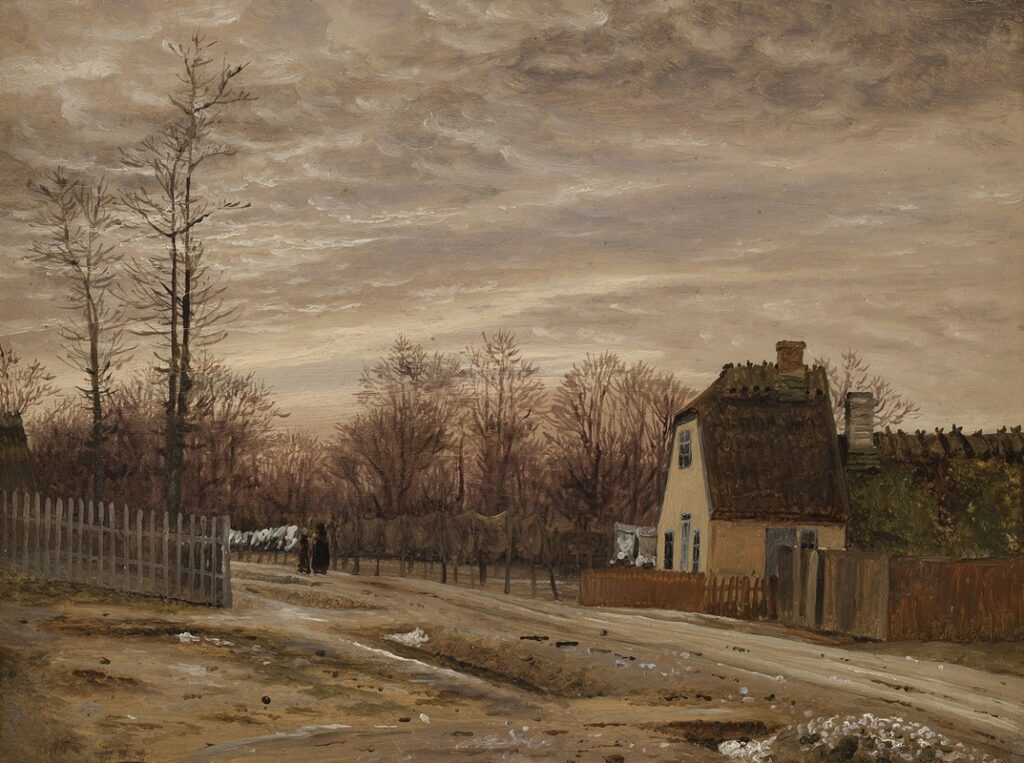
Evening after a Thaw. Taabæk, North of Copenhagen (1850 – 1859)
High-quality reproductions have made Kyhn’s work accessible to broader audiences. Several print companies specialize in reproducing his most famous landscapes for home decoration.
Digital technology has expanded the market for Kyhn prints. Online galleries offer various options, from museum-quality reproductions to affordable decorative prints.
Collectors particularly value Kyhn’s etchings, which showcase his technical skill beyond painting. These works are rarer than his paintings and thus highly sought after when they appear on the market.
Danish cultural institutions have licensed his images for merchandise, keeping his visual legacy alive in contemporary consumer culture.
Frequently Asked Questions
Vilhelm Kyhn (1819-1903) stands as a significant figure in Danish art history. His distinctive landscape paintings and teaching contributions shaped Denmark’s artistic development during the 19th century.
What period did Vilhelm Kyhn contribute to in Danish painting?
Vilhelm Kyhn contributed to Danish painting during the 19th century, specifically from the 1840s through the early 1900s. He lived from March 30, 1819, to May 11, 1903, spanning most of the 19th century.
His artistic career developed during Denmark’s national romantic period, a time of cultural awakening and identity formation in Danish art.
Which art movements or styles is Vilhelm Kyhn notably associated with?
Kyhn is primarily associated with the National Romantic movement in Danish art. This style emphasized Danish landscapes and cultural heritage as expressions of national identity.
His work bridges Romanticism and early naturalism in Danish painting, showing both idealized landscapes and more direct observations of nature.
Though he traveled to Italy in 1850, he remained committed to Danish subjects, unlike many contemporaries who focused on exotic landscapes.
Can you name some of Vilhelm Kyhn’s most influential works?
While specific works aren’t mentioned in the search results, Kyhn is known for his evocative Danish landscapes featuring coastal scenes, forests, and rural vistas.
His paintings often captured distinctive Danish light conditions and terrain, particularly focused on native scenery rather than foreign locations.
The Metropolitan Museum of Art holds some of his works, indicating their significance in the art world.
What was Vilhelm Kyhn’s impact on landscape painting in Denmark?
Kyhn helped establish landscape painting as a respected national art form in Denmark. His works celebrated Danish scenery when many artists were looking abroad for inspiration.
He elevated ordinary Danish landscapes to subjects worthy of artistic attention, helping to define the visual identity of Denmark during a period of national awareness.
His commitment to depicting authentic Danish scenes influenced generations of landscape painters who followed.
How did Vilhelm Kyhn influence other artists of his time?
Kyhn made a significant impact as an educator, running an important academy for female artists at a time when women had limited access to artistic training.
He taught at both the School of Drawing and the School of Painting at prominent institutions, shaping young artists’ approaches to landscape representation.
What are the distinguishing characteristics of Vilhelm Kyhn’s artistic technique?
Kyhn’s work features careful attention to light and atmosphere in Danish landscapes. His paintings often capture the distinctive quality of Nordic light.
His technique balances romantic sensibility with careful observation. As a result, his works feel both emotionally resonant and truthful to nature.
Though part of the National Romantic tradition, his work shows careful study of actual landscapes rather than purely idealized scenes.

